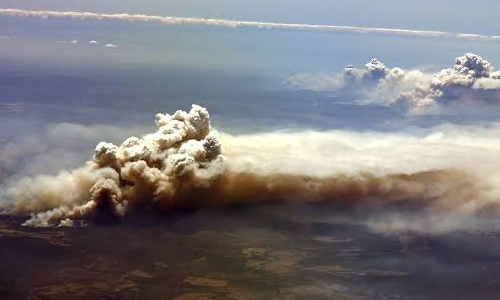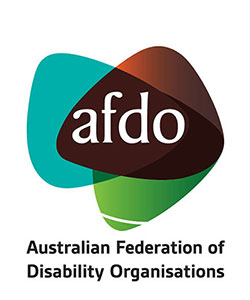As the bushfire crisis unfolds, the Centre for Inclusive Design has created a resource for people to communicate in an inclusive way in times of emergency.
Effective, accessible communication is critical in emergencies and can help save lives. Given that we’re talking about broadcast and social media, this guide focuses on three key areas, hearing, language and vision.
Communication when hearing is an issue
Auslan interpretation
Auslan is the main language for about 5,000 Australians. Another 10-15,000 people use Auslan every day.
During television broadcasts, an Auslan interpreter should always be visible on screen. Avoid close up camera shots which crop out the interpreter or pop up graphics which block their visibility. If the interpreter is not clearly shown on screen, no information is being conveyed.
You can book Auslan interpreters by state and through various agencies (just do a web search for Auslan and your state) or use a national service.
If you are on the ground in one of the affected areas, learning some key Auslan phrases may be useful. In this video, Auslan interpreter Hadley Johnson demonstrates some basic signs useful for emergencies.
Video captioning
1 in 6 Australians experience hearing loss and over 1 million Australians require captioning to understand videos.
Video captioning not only benefits those who are Deaf or hard of hearing, but reaffirms the information being communicated in a written form, aiding in comprehension and memory retention. Captioning also allows videos to be watched without sound, which is particularly important for noisy environments.
Below are some captioning tools which you can use. Automatic captioning tools are quick and easy to use. However, they are not always accurate and manual corrections may be required.
Do it yourself captioning
For social media/emergency videos, captioning may be required at short notice. These are captioning tools which you can use yourself, on smartphones or computers.
- Youtube generates captions for an uploaded video. Here is a guide to using them.
- Apple Clips– live video captioning while you record (Free on App store)
- Zubtitle– generates captions for an uploaded video (This is a paid product)
- Closed Caption Creator– generates captions for an uploaded video (This is paid product)
- Amara– manual captioning (This is a free product)
Captioning service providers
These are professional captioning services who have worked with major media outlets.
- https://www.121captions.com/
- https://www.accessmedia.com.au/
- https://www.ai-media.tv/
- http://livecaptioning.com.au/
- http://www.captioning.com.au/
- http://thesubstation.com.au/
- https://www.zoodigital.com/
Auslan interpreter vs captioning
Auslan and English contain different structures and syntax for sentences and so, reading captions may be difficult for Auslan viewers to understand. It is recommended that both captioning, and Auslan interpretation is provided.
Communicating when language is an issue
Plain English
Use of simple, plain language is not only a requirement for people who experience an intellectual or cognitive disability to best understand information but vital in emergency scenarios. Keep your messaging clear and concise for effective communication. Jargon and abbreviations should also be avoided.
Key communications should also be repeated to ensure that your message is conveyed.
Free online translation tools
Here are some online resources that can be used to translate phrases for written forms of communication.
Professional Translation services
Longer messages translated by tools may contain grammatical and syntax errors when translated and so, we recommend using a professional translation service for longer written and video forms of communication.
- Australian Translation Services
- Translating and Interpreting Service
- LanguageLoop
- Aussie Translations
Contact the Centre for Inclusive Design if you have any suggestions
If anyone has suggestions for improving accessible communications and/or recommendations for accessibility tools, contact the Centre for Inclusive Design on info@cfid.org.au Tel: 02 9212 6242.
To learn more about communication when vision is an issue and about Multilingual translations, read the full article at http://centreforinclusivedesign.org/community/blog/2020/january/09/communicating-inclusively-in-emergencies/



